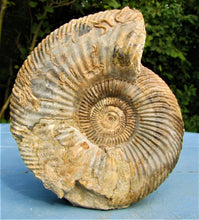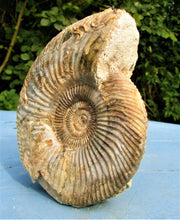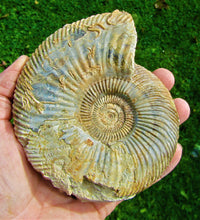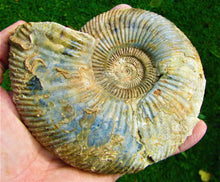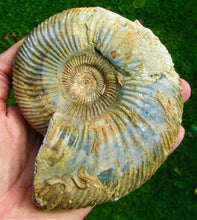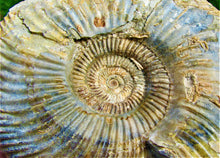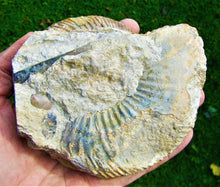
A stunning example of an uncommon calcite ammonite fossil of the species Parkinsonia rarecostata from the Jurassic Coast beach of Burton Bradstock, Dorset UK.
The fossil ammonite measures 127 mm (5 inch) tall, is very well preserved, and has been prepared out of the rock to reveal the whole shell. The ribs are very finely defined, and the mottled colour is beautiful. It was split in two pieces when found and has been repaired back together with some damage present on the outer whorl, but this does little to detract for the quality of the specimen. A great example of an uncommon species and impressive in the flesh. The fossil weighs 700 grams and has a cut-flat base to allow it to stand freely for display. These ammonites are hard to find in this condition due to a lack of erosion on this part of the coast. They make wonderful display items and look great as interior design features.
Around 168 million years old (Bajocian, Middle Jurassic), this fossil would make a wonderful addition to any collection.








